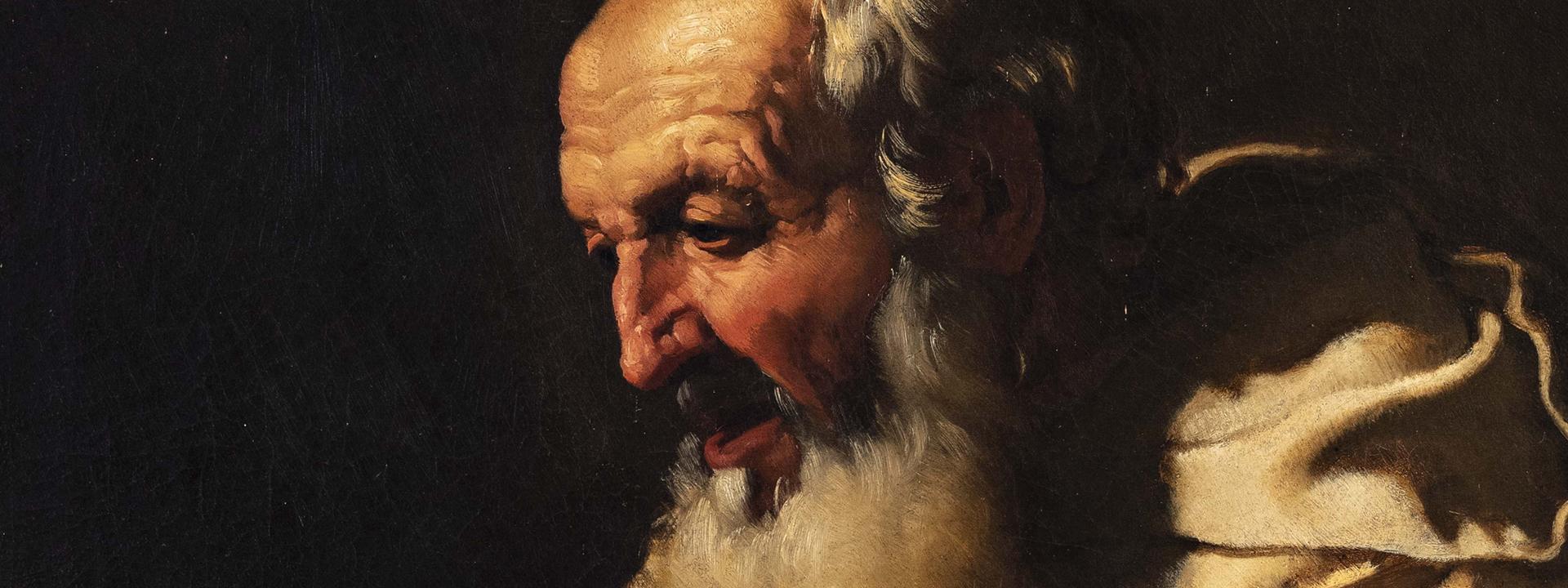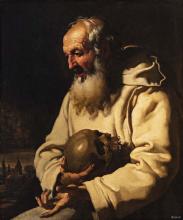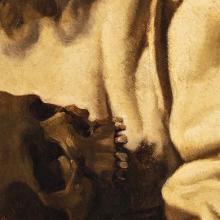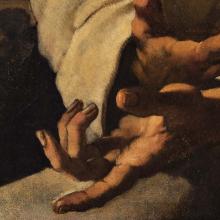The painting entered the Gallerie in 1850 and was attributed to various artists until Hermann Voss reassigned it to Carl Johann Loth. It depicts Saint Romuald, founder of the Camaldolese order, as he sits in meditation holding in his hand a skull, his typical attribute.
The figure of Saint Romuald is illuminated by an intense light which throws the volumes into relief against the darkened background landscape. In the foreground the hermit sits in three-quarter profile, his inner thoughts betrayed by his suspended hand and contemplative expression. Great prominence is given to the white tunic he is wearing through the use of thick layers of bright impasto. Based on stylistic evidence, the painting is believed to date from the artist’s early Venetian period before he embraced that form of naturalism with its starkly contrasting use of chiaroscuro known as Tenebrism, which was to characterise his work once the 1660s were fully under way.




